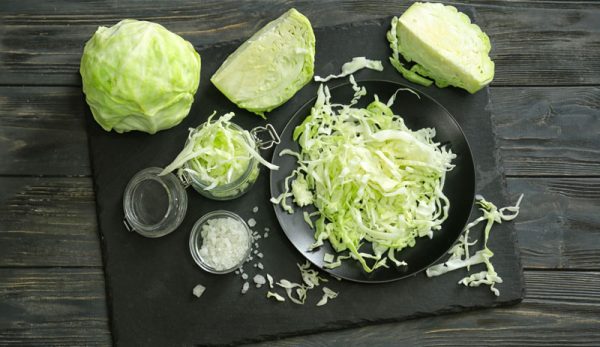
With home food fermentation picking up steam, there are many options on the market for what to ferment in and with. It’s great that this movement has grown in popularity. But with so many options out there, it can become overwhelming to know what’s needed (and not needed) to get started.
That’s why I’ve come up with a beginner’s supply list for home fruit and vegetable fermentation.
Food-Safe Jar
A standard quart size regular mouth canning jar is all you really need to get fermenting. It’s a great and inexpensive vessel to begin with. And if you really get into fermenting, you can always graduate to a fermentation crock.

They do make fermentation crocks in various sizes, including small ones. But be sure that you purchase your crock from a trusted source so that you know the glaze is safe. My favorite source for crocks is Stone Creek Trading.
Read more: Go on a fermentation journey with renowned expert Sandor Ellix Katz.
Jar Weight
Many recipes call for a weight to keep the produce under the brine when fermenting. Keeping the food submerged is key to a successful ferment and helps avoid mold.

I personally use a small glass jar lid from a WECK jar when fermenting in jars. But there are many jar weight options on the market such as these ones and these.
Self-Burping Lid/Airlock
You can certainly ferment without an airlock. But it does make it easier if you add one to your jar ferment.

Many recipes require you to “burp” the jar daily. Burping a ferment is essentially just unscrewing the canning jar ring, removing the lid and allowing the built-up gas to release. With an airlock, this step is removed.
An airlock allows the ferment to bubble away while keeping dust and bugs out. Here are two of my favorite airlock options for jars: Silicone Air Lock and Standard Air Lock.
Read more: Add some zing to your holidays with this simple fermented cranberry relish.
Salt
All of the fermented recipes I write in my cookbooks include kosher salt. I use kosher salt because it’s easy to find, inexpensive and it makes great ferments.

But if you want to experiment with different sea salts, be my guest. When adjusting recipes to include different types of salts with different fineness, be sure to check a salt conversion chart.
Fresh Organic Produce
Sure, you can make ferments with older produce as well, but you’ll get the biggest bang out of it if you use freshly harvested fruits and vegetables.

Did you know that by fermenting your produce, you are actually making it more nutritious? Fermented vegetables are easier for the body to digest and the vitamins and nutrients are more readily available for your body to absorb.
Plus, they are full of the good-belly bacteria that we’ve all heard so much about: probiotics.
I hope this supply list helps you get started fermenting at home. It can seem intimidating at first, but once you give it a try you’ll see how easy and delicious it really is.
Side note: Many people prefer to weigh out salt to reach an exact brine salinity. I do not see this being a requirement with fruit and vegetable ferments, unless you sell your ferments and want the same outcome with each product. If you do prefer to weigh your recipes, here is the food scale I recommend.




